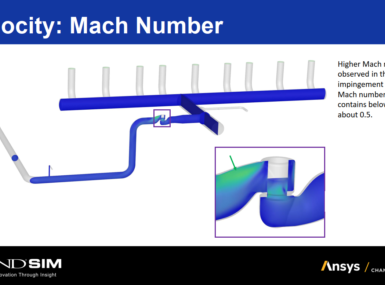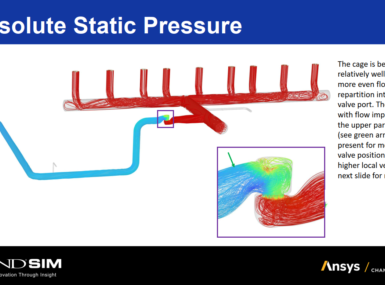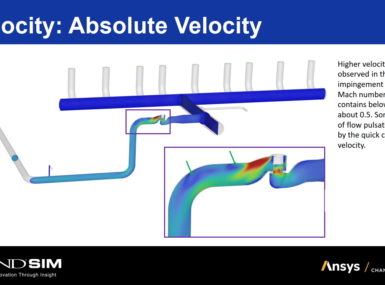Shock Propagation & Supersonic Flow
Executive Summary
A gas compressor station was experiencing high vibrations in the gas piping while performing gas turbine commissioning and compressor surge testing. The discharge piping, recycle valve, and recycle piping was observed to have high vibrations that exhibited as shocks to the piping under certain operating conditions.
Introduction
A simulation was created using 3D models provided by the customer, as well as valve geometry and detail from equipment datasheets and diagrams. RandSIM used CFD and FEA to interrogate the behavior and demonstrate the effects on the piping and structural components.
Objective
Analysis of the first operating point reveals significant shedding from the valve at a frequency of 18.6Hz. This frequency closely aligns with structural mode identified in the FEA analysis, suggesting a resonance phenomenon contributing to the observed vibrations during testing. To prevent or alleviate this resonance, recommendations were made to modify the structure to shift the resonance away from 18.6Hz. The objective of the CFD analysis was to determine potential safe operating zones for the compressor without negatively affecting the station throughput or capacity flow rates.
Case Study
The simulations accurately predicted the same behavior that was observed during testing. The simulation focuses on two distinct operating points. The first operating point is with the recycle valve slightly below 50% open and close to maximum compressor power. Low to moderate vibrations were noted in the observed vibration data. The second operating point, where the high vibration were observed, occurred when the compressor operates at full power, and the recycle valve position is >70% open. The exact valve position is adjusted in CFD until Mach 0.9 is reached in the pipes. The resulting valve position is recorded as the maximum safe position predicted by CFD.
Examining the second operating point, it was determined that the maximum safe valve position required to prevent shocks through the piping at full compressor power, was ~< 80%. Beyond this threshold, there is a risk of the valve throat going supersonic, leading to elevated vibrations at high amplitude in the pipe, which presents the potential for rapid fatigue damage. In order to address this effect specifically, increasing the valve size and, if possible, increasing the pipe diameter immediately downstream of the valve.





